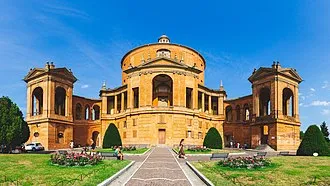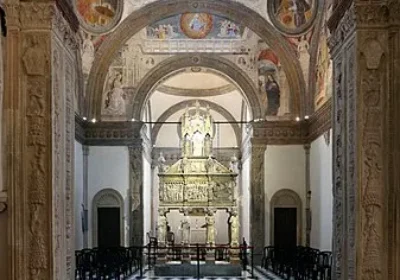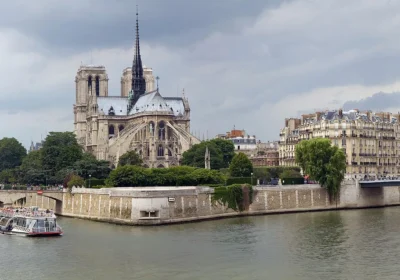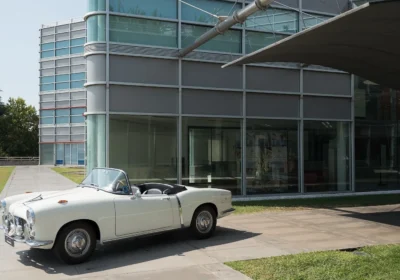The itinerary includes the classic “Colours of Bologna” tour and a visit to the Sanctuary of St Luke, which is something of a beacon on land for Bolognese returning home. If the Two Towers are considered the symbols of the city, the Sanctuary of St Luke is a Bolognese ‘icon’. The Blessed Madonna of St Luke is worshipped here.
The Madonna di San Luca on the Hill of Guardrail is a famous pilgrimage site in Bologna, and ordinary tourists are keen to see the sanctuary, which has become one of the city’s symbols. In the XII century there was a hermitage here, where from the church of St Sophia in Constantinople some hermit brought an icon of the Mother of God, created by the Evangelist Luke. On it was written “Guard Hill”. The shrine stands at the top of the wooded hill of Guardia, southwest of the centre of Bologna. One of its unique features is the arcade with more than six hundred vaults that leads to the shrine. Its total length is almost 3.8 kilometres and it connects the church to the city. The arcade also serves as a shelter for the solemn procession that every year since 1433, on Ascension, carries the icon of the Byzantine Madonna and Child to the Cathedral of San Pietro in the city centre. In 1930 a funicular railway with a single pylon was built. However, it caused strong resentment among devout believers who believed that pilgrimages to the shrine should only be made on foot. In 1976, the lift was closed because of increased car traffic.
The sanctuary on the site of the current church of San Luca stood for more than 1,000 years. In the 12th century, a pilgrim from the Byzantine Empire brought an icon of the Virgin Mary to Bologna from the Church of St Sophia in Constantinople. In 1160 the icon was placed in a small chapel at the top of the hill, cared for by two women, and as early as 1193 a full church began to be built on the site.
The present church was built by the architect Dotti between 1723 and 1757, replacing an earlier 15th-century structure. The two tribunes on the outside were completed to his father’s designs by Dotti’s son Giovanni Giacomo in 1774, and the church has not changed significantly since then.
The present church is a cylindrical basilica with a semicircular roof and side additions decorated with arches and columns. In front of it is a spacious courtyard, and the main entrance is reached by a wide staircase with shaped railings and verandas on both sides.
The interior of the basilica abounds in columns, mouldings and gilding. The altar is richly painted, but its main value is the icon of Our Lady. It is small, and its value is emphasised by the gilded, angelic and floral ornamented frame, which is much larger than the relic itself.
The open space in front of the basilica is the only example of Baroque open-air architecture in the city. There is an observation deck under the dome that overlooks the neighbourhood and a small part of the city. You can climb to it for a fee.

















